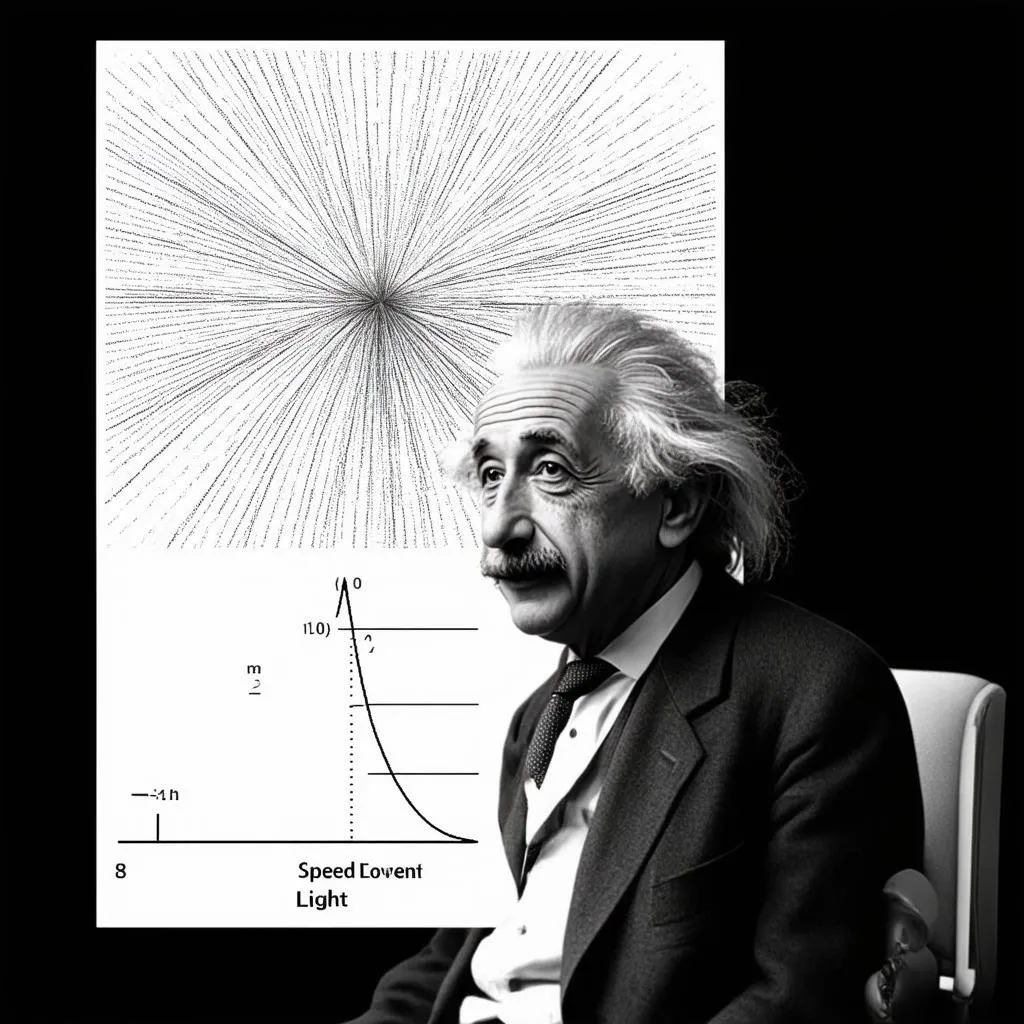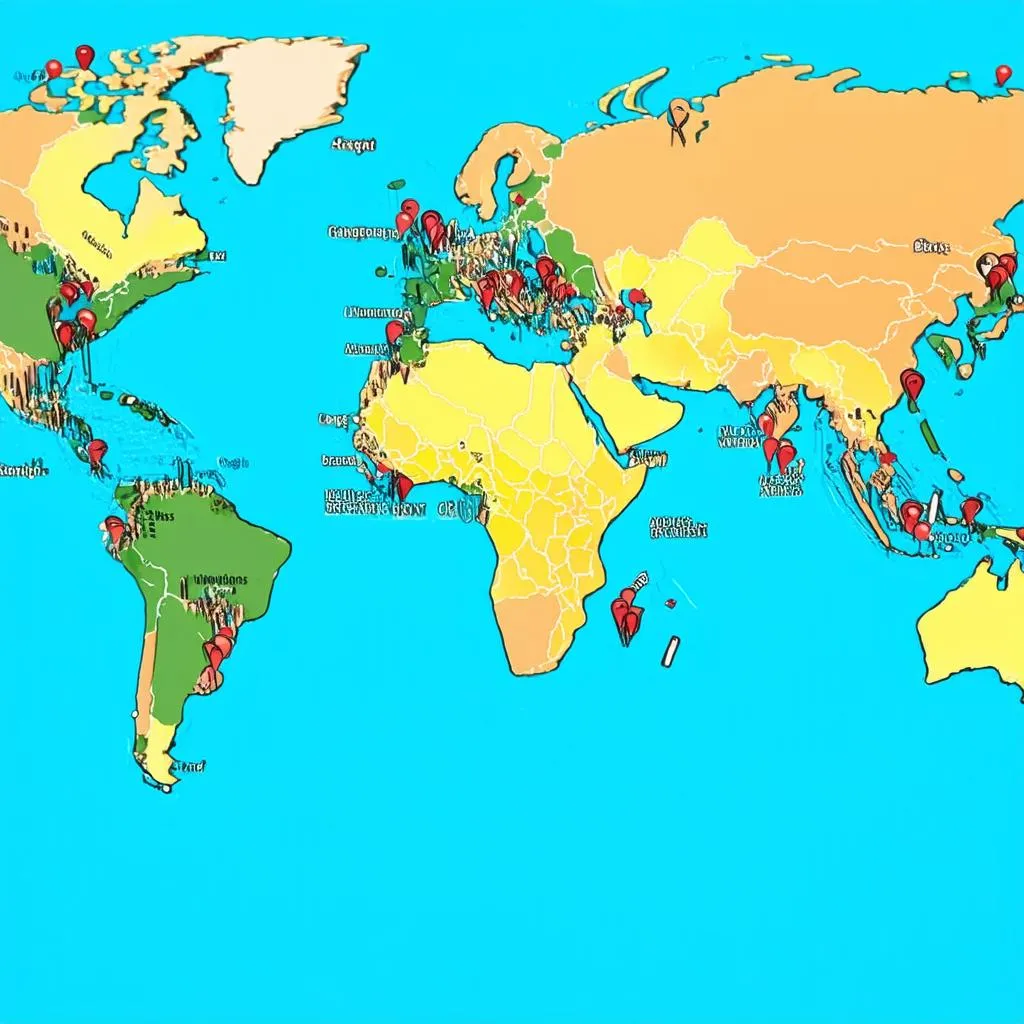Have you ever gazed at the night sky, mesmerized by the twinkling stars, and wondered about the vastness of the universe? I remember a particularly memorable trip to the Griffith Observatory in Los Angeles, California, where the vastness of the cosmos unfolded before me. Looking through the gigantic telescope, I couldn’t help but ponder, could we ever travel to these distant celestial bodies? Could anything ever travel faster than light?
It’s a question that has captivated scientists and science fiction enthusiasts alike. The speed of light, a mind-boggling 299,792,458 meters per second (approximately 186,282 miles per second), has long been considered the ultimate speed limit in the universe. But is it truly insurmountable? Let’s delve into the fascinating world of physics and explore the possibilities.
Einstein’s Cosmic Speed Limit
Albert Einstein’s theory of special relativity, published in 1905, revolutionized our understanding of space, time, and the universe. One of its most profound implications is the concept of the cosmic speed limit: nothing can travel faster than light in a vacuum.
This speed limit arises from the fundamental relationship between mass, energy, and speed. As an object approaches the speed of light, its mass increases infinitely. This means that an infinite amount of energy would be required to propel an object with mass to the speed of light, which is physically impossible.
Faster-Than-Light Illusions
While exceeding the speed of light for objects with mass seems impossible within our current understanding of physics, there are some intriguing phenomena that appear to involve faster-than-light travel:
1. Quantum Entanglement
Quantum entanglement is a bizarre phenomenon where two particles become linked, even across vast distances. When the state of one particle is measured, the state of the other particle changes instantaneously, regardless of the distance between them. This “spooky action at a distance,” as Einstein famously called it, seems to violate the speed of light limit.
However, it’s important to note that quantum entanglement doesn’t actually involve the transmission of information faster than light. While the correlation between the particles is instantaneous, it can’t be used to send messages or travel through space faster than light.
2. The Expanding Universe
The universe is constantly expanding, and the rate of this expansion is accelerating. Distant galaxies are moving away from us at speeds that increase with distance. At a certain distance, known as the Hubble horizon, galaxies are receding from us faster than the speed of light.
It’s crucial to understand that this faster-than-light recession doesn’t violate special relativity. The galaxies themselves aren’t moving through space faster than light. Instead, the space between us and those galaxies is expanding, carrying them along faster than the speed of light.
Warp Drives and Wormholes: Science Fiction or Future Reality?
The concept of traveling faster than light has captivated the imaginations of science fiction writers for decades. Warp drives, wormholes, and other exotic concepts offer tantalizing possibilities for interstellar travel.
1. Warp Drives
A warp drive is a theoretical concept that involves manipulating the fabric of spacetime itself. Instead of accelerating an object through space, a warp drive would create a “bubble” of warped spacetime around the object, allowing it to effectively travel faster than light by shortening the distance between two points.
While mathematically plausible, the existence of warp drives remains highly speculative. The amount of energy required to create such a distortion in spacetime is astronomical and far beyond our current technological capabilities.
2. Wormholes
Wormholes are theoretical tunnels that connect two distant points in spacetime, potentially allowing for faster-than-light travel. Imagine folding a piece of paper in half and poking a hole through it. The hole represents a shortcut, or wormhole, between two distant points on the paper.
However, like warp drives, wormholes remain highly theoretical. Their existence hasn’t been confirmed, and even if they do exist, their stability and traversability are uncertain.
So, Can We Break the Cosmic Speed Limit?
Based on our current understanding of physics, traveling faster than light for objects with mass seems highly unlikely. Einstein’s theory of special relativity remains a cornerstone of modern physics, and it sets a formidable speed limit.
However, the universe is full of surprises, and our understanding of physics is constantly evolving. Phenomena like quantum entanglement and the expanding universe hint at the possibility of mechanisms beyond our current comprehension.
Perhaps one day, with advancements in technology and our understanding of the universe, we’ll unlock the secrets of faster-than-light travel. Until then, it remains a captivating area of exploration for scientists and dreamers alike.
 Einstein and the Speed of Light
Einstein and the Speed of Light
Exploring the World at Our Own Pace
While faster-than-light travel remains a distant dream, there’s a whole universe waiting to be explored right here on Earth. From the breathtaking landscapes of the Grand Canyon to the vibrant cultures of Southeast Asia, the possibilities for adventure are endless.
Here at travelcar.edu.vn, we’re passionate about helping you discover the world and create unforgettable travel experiences. Whether you’re planning a road trip across the United States or a backpacking adventure through Europe, we’ve got you covered with expert travel tips, destination guides, and transportation resources.
Speaking of transportation, did you know that the fastest land vehicle in the world, the Thrust SSC, reached a speed of 763 mph? That’s incredibly fast, but still a far cry from the speed of light! You can learn more about vehicle speeds and physics on our website, including articles on topics like “A car traveling north at 40 mph” or “How fast does a 9mm bullet travel mph?”
 World Map with Highlighted Destinations
World Map with Highlighted Destinations
Planning Your Next Adventure?
Before you embark on your next journey, consider these important travel tips:
- Plan ahead: Research your destination, book accommodations in advance, and pack accordingly.
- Respect local customs: Be mindful of the cultural norms and traditions of the places you visit.
- Travel responsibly: Minimize your environmental impact, support local businesses, and be a respectful traveler.
- Embrace spontaneity: Don’t be afraid to deviate from your itinerary and embrace unexpected experiences.
Frequently Asked Questions About Traveling
Q: What are some tips for traveling on a budget?
A: There are many ways to travel affordably, such as opting for budget-friendly accommodations, cooking your own meals, taking advantage of free activities, and traveling during the off-season.
Q: What are some essential items to pack for any trip?
A: Some essential packing items include a universal adapter, a first-aid kit, comfortable walking shoes, weather-appropriate clothing, and a reusable water bottle.
Q: How can I stay safe while traveling?
A: Research common scams, be aware of your surroundings, keep your valuables secure, and share your itinerary with a trusted friend or family member.
Conclusion
While we may not be able to travel faster than light just yet, the pursuit of knowledge and exploration continues to inspire us. Whether you’re dreaming of distant galaxies or planning your next earthly adventure, travelcar.edu.vn is here to guide you on your journey. So, pack your bags, embrace the unknown, and discover the wonders that await you.
Don’t forget to share your travel stories and tips in the comments below! We love hearing from fellow travel enthusiasts.